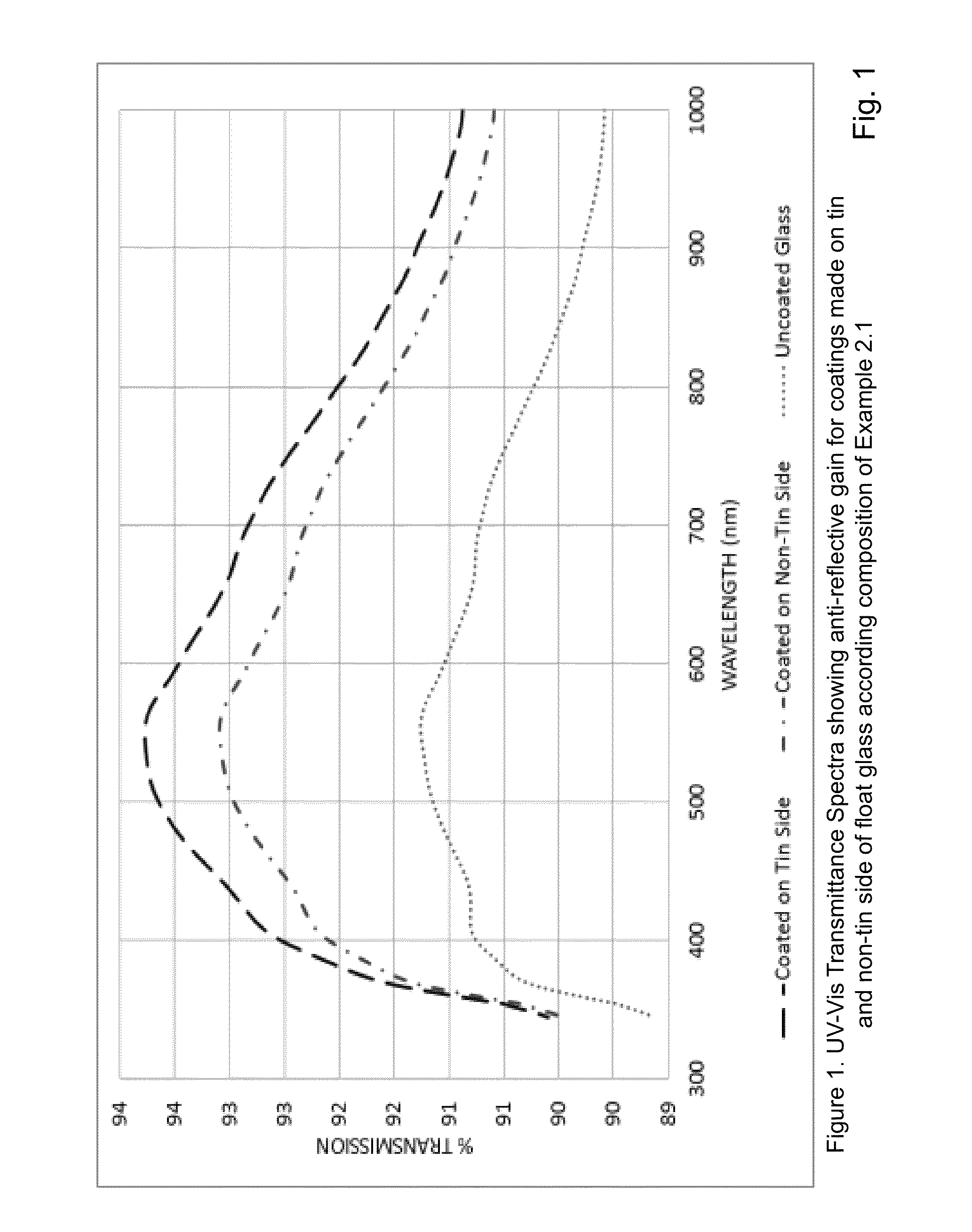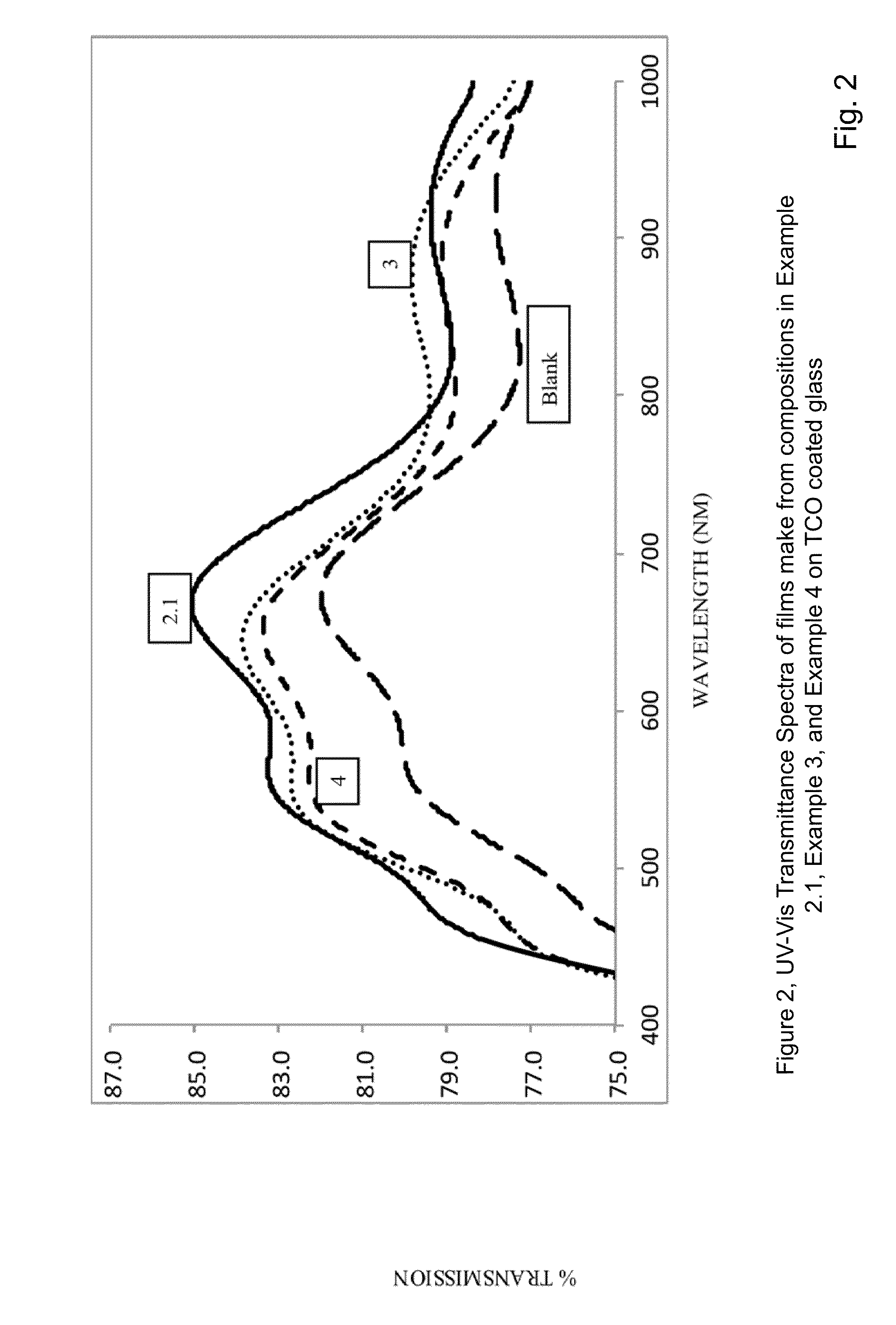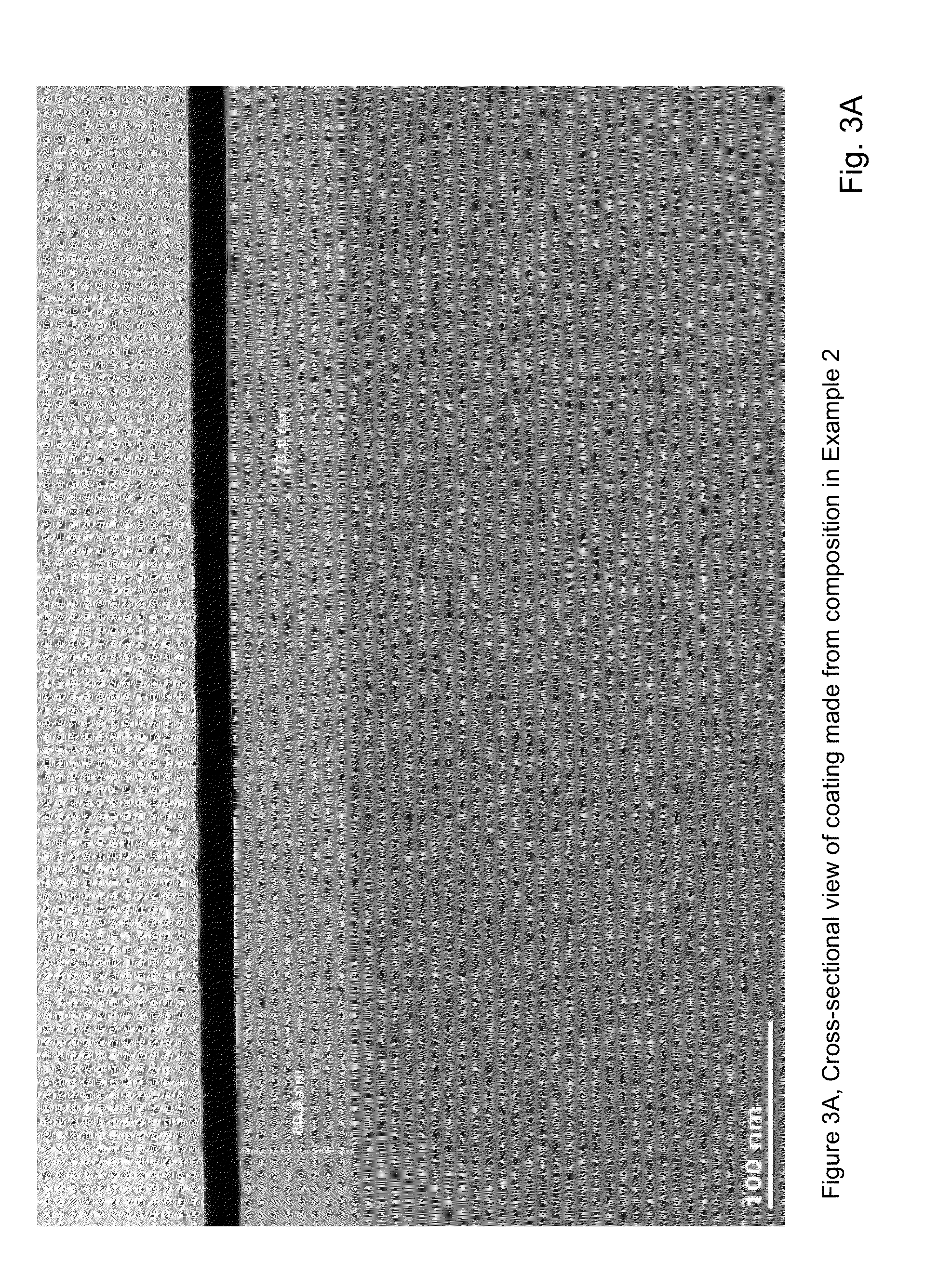Tuning the Anti-reflective, abrasion resistance, Anti-soiling and self-cleaning properties of transparent coatings for different glass substrates and solar cells
a technology of transparent coatings and glass substrates, applied in the field of coatings, can solve the problems of significantly reducing the optical transparency increasing the refractive index, and accumulating dirt on the surface of the optical element, and achieve the effect of higher transmission
- Summary
- Abstract
- Description
- Claims
- Application Information
AI Technical Summary
Benefits of technology
Problems solved by technology
Method used
Image
Examples
examples
[0099]The following describes various aspects of the coatings made according to certain embodiments of the disclosure in connection with the Figures. These examples should not be viewed as limiting.
[0100]In one embodiment referred to as Example 1, Sol I was prepared by first mixing 22.5 mL of isopropanol (IPA) and 2.5 mL of 0.04M HCl (pH 1.5). 100 μL of methyltrimethoxysilane (MTMOS) was then added to this mixture. The final solution of IPA, HCl, and MTMOS was then sonicated in a sonicator for 35 minutes. Sol II was prepared by first mixing 22.5 mL of IPA and 2.5 mL of 0.04M HCl (pH 1.5) followed by adding 100 μL of (3,3,3-trifluoropropyl)-trimethoxysilane (F3TMOS). Sol II was also sonicated for 35 minutes. After sonication, Sol I and Sol II was mixed in equal parts (12.5 mL each), and 100 μL of tetramethoxysilane (TMOS) was added. This final solution was then sonicated for 35 minutes. This mixture was allowed to age under ambient conditions for 24 hours up to 120 hours. After aging...
PUM
| Property | Measurement | Unit |
|---|---|---|
| Temperature | aaaaa | aaaaa |
| Temperature | aaaaa | aaaaa |
| Fraction | aaaaa | aaaaa |
Abstract
Description
Claims
Application Information
 Login to View More
Login to View More - R&D
- Intellectual Property
- Life Sciences
- Materials
- Tech Scout
- Unparalleled Data Quality
- Higher Quality Content
- 60% Fewer Hallucinations
Browse by: Latest US Patents, China's latest patents, Technical Efficacy Thesaurus, Application Domain, Technology Topic, Popular Technical Reports.
© 2025 PatSnap. All rights reserved.Legal|Privacy policy|Modern Slavery Act Transparency Statement|Sitemap|About US| Contact US: help@patsnap.com



